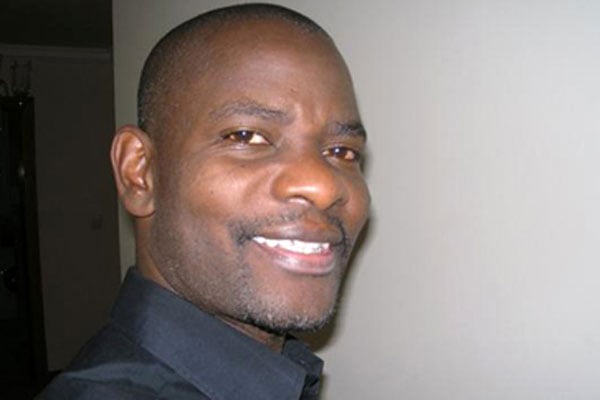Mbale caught in the grip of climate crisis

Residents retrieve a car wreckage from River Nabuyonga in Mbale District on August 1, 2022 after it burst its banks. PHOTO | MICHAEL WONIALA
Communities hit by floods in Mbale City face an uncertain future amid heavy rainfall forecasts from the weatherman for the sub-region.
By Friday, as the floodwaters subsided, locals had now turned the attention to repairing the damage wrought by the floods.
The devastating floods, which left 29 dead and others missing, were triggered after rivers such as Nabuyonga, Namatala, Nashibiso and Napwoli burst their banks shortly after a heavy downpour that spanned 10 hours on Sunday.
Local leaders have partly blamed the floods, the first of their kind in the middle of the city, to poor physical planning and corruption.
“The physical plan of the city has been mismanaged and builders have built houses where water was supposed to pass,” Mr John Maango Situma, an elder, said.
Mr Situma said in the past, the city never experienced floods because construction of buildings was done in line with urban authorities laws and regulation.
“Leaders should stop issuing permits, land titles and house plans to be constructed on water ways because when the rivers flood, they will take their course,” he said.
During a Friday national address, President Museveni said the Cabinet will meet tomorrow to thrash out a riot act on environment degradation. After a fact-finding visit last weekend, Prime Minister Robinah Nabbanja came to the conclusion that “this disaster is due to environmental degradation.”
Many buildings in Mbale City have been built on the banks of Nabuyonga and Namatala rivers.
Most of those houses were submerged on the fateful night. Other structures have shot up on road reserves, sewerage lines, street alleys and also in wetlands in areas of Doko, Nabitiri, Namakwekwe, Namatala, Mutoto, Mooni, South Central, IUIU, Nambijjo and Booma.
“The people must leave wetlands and river banks. They must build only with an approved plan from the physical department of the city,” Mr Juma Mugabi, a retired civil engineer, told Sunday Monitor.
Retrogression
Mr James Magode Ikuya, the junior East African Community minister, said the regression in Mbale City is particularly “worrying” because previously “it was a purely well planned city.” Mr Yasin Mafabi, an opinion leader, attributes the regression to corruption.
“I struggle to make sense of the type of leadership we have these days. All they want is money,” he said of local leaders that have let structures shoot up in wetlands.
Mr David Mbogo, an environmentalist, castigated “so-called developers” for haphazard approaches “without approved plans” that have even seen schools established in wetlands. Some, like Mr James Kutosi—the Mbale City Council spokesperson—however, maintain that Mbale City is well planned.
“You cannot connect floods with planning. Even in developed countries such as the United States of America, it floods. Floods occur everywhere, not only in Mbale,” Mr Kutosi reasoned.
According to a report from the Office of the Prime Minister (OPM), the floods displaced nearly 1,000 persons after damaging 80 houses and three health centres.
They also swept away bridges such as Mbale-Bufumbo, Namabale, Nashikasho,Namawane, Nangirira, Busamaga, Bukhatoko, Ndohwe, Nambitsi, Namakole and also Nabuyonga.
The Mbale-Nkokonjeru and Mbale-Bufumbo roads have also been blocked by boulders and debris caused by floods. Other roads affected are Nashikasho-Namawane, Sakiya-Bukhatoko, Ndohwe, Nambitsi, Busaano and Busaano-Bufoto.
Ms Rhoda Nyaribi, the Mbale City environment officer, said “the flash floods are because of a lot of degradation, especially upstream hills due to settlement and poor agriculture practices.” She said the ecosystem needs to be “restored and preserved.”
“We have held sensitisation workshops and warned people, but none of them has responded and now nature has acted harshly,” she noted.
Dark past
Elgon Sub-region has been experiencing back-to-back disasters—including floods and landslides—since 1990. Mr Jimmy Okello, an environmentalist, says the environmental degradation in the sub-region—which looks primed to continue—“has been worsened by the laissez-faire approach to the disaster by authorities.”
Mr Fredrick Kiiza Kayanja, the chief warden at Mt Elgon Park, believes “the effects of climate change have become real” and yet many still live in denial.
“Whenever you attempt to cultivate on the steep slopes, there will be surface runoffs, especially during heavy rains,” Mr Kiiza said, adding that the wetlands no longer serve their natural purpose due to environmental degradation.
Landslides—like the one that hit Kapsinda Sub-county in Sebei, killing a mother and two of her children—have intensified in recent times. Mr Kizza told Sunday Monitor that the ecosystem needs to be restored through planting trees, grass as well as terracing and practicing better farming methods. Short of that, “we should prepare to lose more people.”
Ms Daphine Nambuya, the coordinator for Wildlife clubs of Uganda in-Charge tree planting in Elgon Sub-region, notes rainfall patterns have changed due to climate change.
“The rain used to start from March to June for the long season and September through October to December for the shorter spell, but now we are having rain anytime,” she said.
It has not helped matters that 60 per cent of wetlands in the Sub-region have been encroached on as per Ms Lamula Were, the Senior Environmental Officer of Butaleja District.
Mr John Baptist Nambeshe, the Opposition chief whip in Parliament and Manjiya County lawmaker, said the government has failed to manage disasters in the sub-region. And the past track record suggests so.





